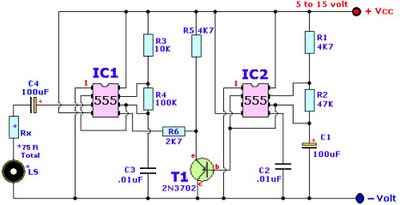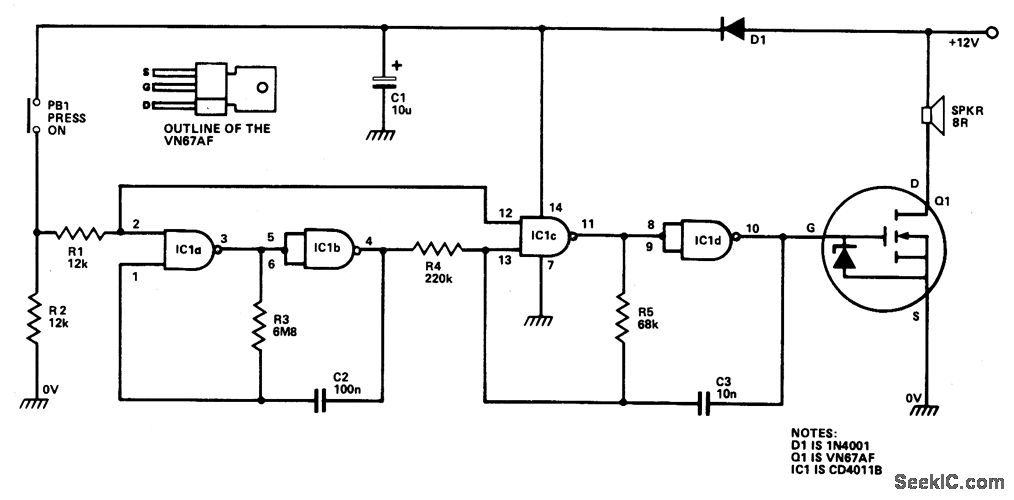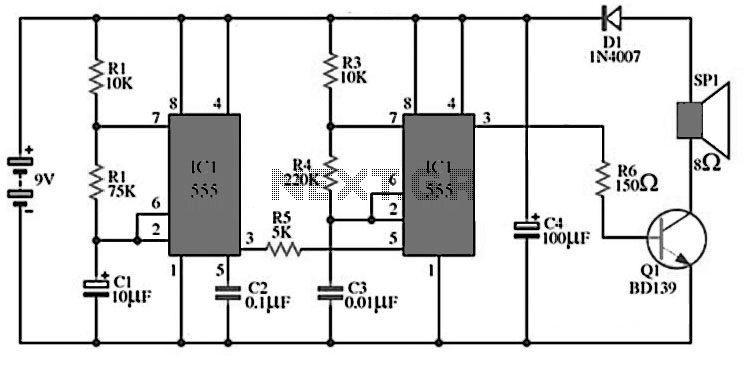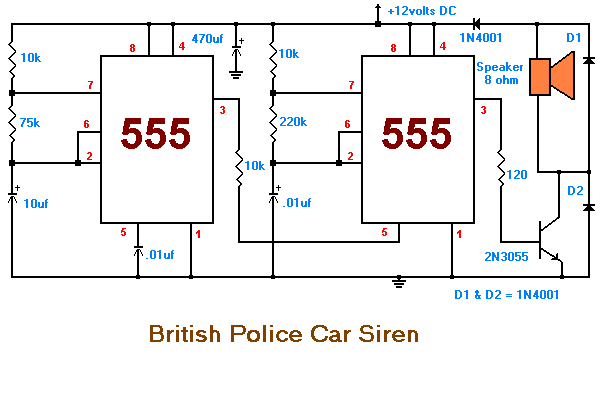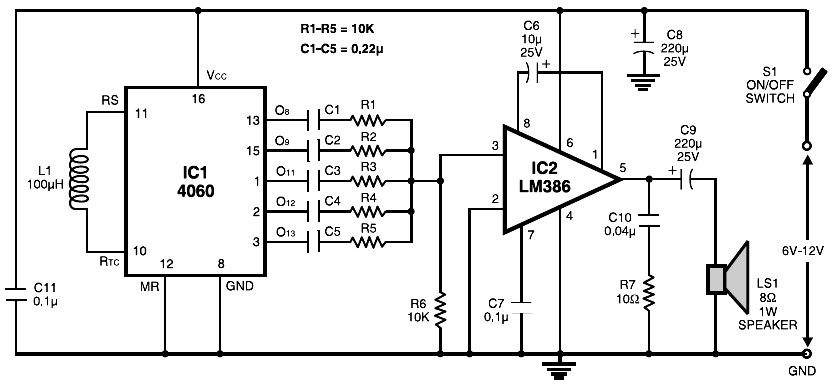
6W Warble-Tone Siren
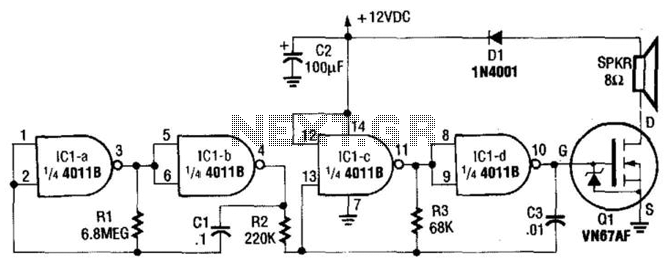
This circuit utilizes a CMOS chip and a VMOS FET amplifier to achieve 6 W of audio output. With a +24 Vdc power supply, it can generate up to 18 W of audio. IC1A and IC1B function as a 1-Hz oscillator, while IC1C and IC1D create a 1-kHz multivibrator that is controlled by the 1-Hz signal from IC1A and IC1B.
The circuit is designed to deliver audio amplification with a specific focus on efficiency and power output. The CMOS chip serves as the core component for generating the necessary oscillator signals, which are critical for the operation of the audio amplifier. The 1-Hz oscillator formed by IC1A and IC1B provides a low-frequency signal that is essential for timing applications within the circuit, ensuring that the system operates in a synchronized manner.
The 1-kHz multivibrator, constructed using IC1C and IC1D, receives its gating signal from the 1-Hz oscillator. This multivibrator is responsible for generating a higher frequency output that can be used to modulate the audio signal. The gating mechanism allows for precise control over the timing and characteristics of the output waveform, which is crucial for audio fidelity and performance.
The VMOS FET amplifier is utilized for its high efficiency and ability to handle significant power levels. With a power supply of +24 Vdc, the amplifier can produce up to 18 W of audio output, making it suitable for various audio applications. The design ensures that the amplifier operates within its optimal range, minimizing distortion and maximizing sound quality.
In summary, this circuit integrates a CMOS chip and a VMOS FET amplifier to create an efficient audio output system capable of delivering substantial power while maintaining audio quality. The use of oscillators and multivibrators provides essential timing and modulation capabilities, enhancing the overall performance of the audio amplification circuit. This circuit uses a CMOS chip and a VMOS FET amplifier for 6 W of audio output. 18 W of audio can be generated using a + 24-Vdc supply. IC1A and IC1B are used as a 1-Hz oscillator. IC1C and IC1D form a 1-kHz multivibrator that is gated by the 1-Hz signal from IC1A and IC1B.
The circuit is designed to deliver audio amplification with a specific focus on efficiency and power output. The CMOS chip serves as the core component for generating the necessary oscillator signals, which are critical for the operation of the audio amplifier. The 1-Hz oscillator formed by IC1A and IC1B provides a low-frequency signal that is essential for timing applications within the circuit, ensuring that the system operates in a synchronized manner.
The 1-kHz multivibrator, constructed using IC1C and IC1D, receives its gating signal from the 1-Hz oscillator. This multivibrator is responsible for generating a higher frequency output that can be used to modulate the audio signal. The gating mechanism allows for precise control over the timing and characteristics of the output waveform, which is crucial for audio fidelity and performance.
The VMOS FET amplifier is utilized for its high efficiency and ability to handle significant power levels. With a power supply of +24 Vdc, the amplifier can produce up to 18 W of audio output, making it suitable for various audio applications. The design ensures that the amplifier operates within its optimal range, minimizing distortion and maximizing sound quality.
In summary, this circuit integrates a CMOS chip and a VMOS FET amplifier to create an efficient audio output system capable of delivering substantial power while maintaining audio quality. The use of oscillators and multivibrators provides essential timing and modulation capabilities, enhancing the overall performance of the audio amplification circuit. This circuit uses a CMOS chip and a VMOS FET amplifier for 6 W of audio output. 18 W of audio can be generated using a + 24-Vdc supply. IC1A and IC1B are used as a 1-Hz oscillator. IC1C and IC1D form a 1-kHz multivibrator that is gated by the 1-Hz signal from IC1A and IC1B.
